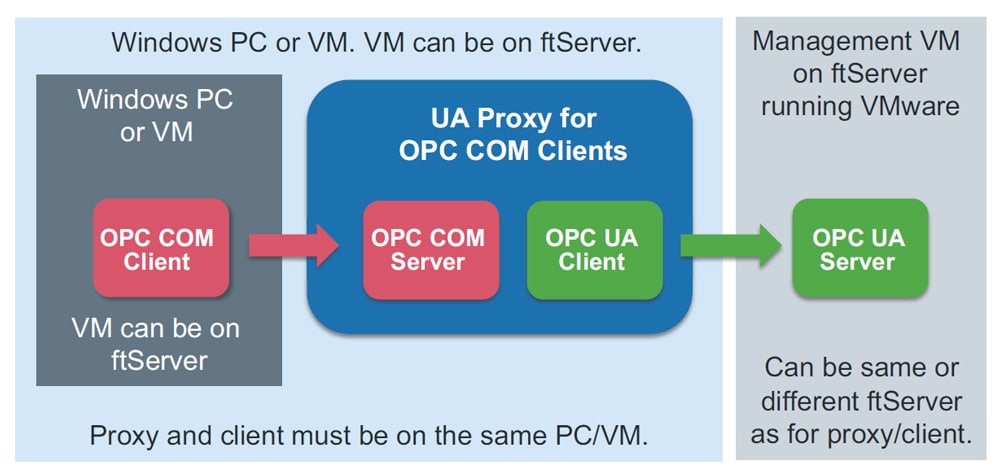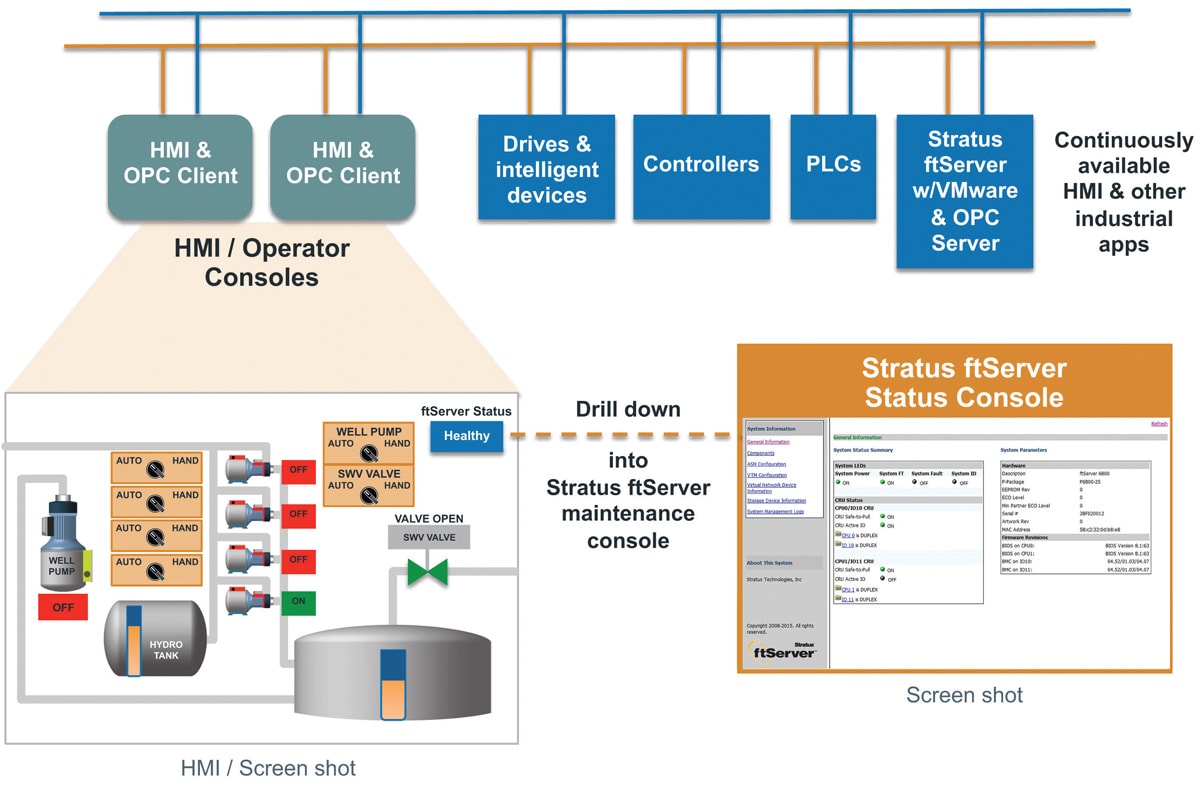Solution Brief
OPC Server for VMware
Standardization for Industrial Automation
Stratus supports the Open Platform Communications (OPC) standard to ensure that Stratus ftServers® running on VMware are an integral part of your Industrial Automation (IA) infrastructure, further extending interoperability with other business critical applications.
Key Benefits
- A simple, intuitive view of the Stratus ftServer as an always-on device within an Industrial Automation environment
- The ability to drill-down from overall server state to status of individual components via a link to the Stratus management console
- Support for both OPC UA and OPC DA or Classic
The Stratus OPC Server presents the Stratus ftServer as a managed device within your HMI (Human Machine Interface). It quickly and easily gives production operations and maintenance personnel ‘up to the minute’ status and health information of their industrial application servers—right through their normal operational screens and software applications.
The unique fault-tolerant architecture of ftServer means that automation technicians and engineers will always know the status of their ftServer, even in the event of a failure.
The Stratus OPC Server runs as a standard ftServer management appliance virtual machine in your VMware environment. It supports the most current Unified Architecture (UA) standard for OPC, which is more secure and offers higher performance than OPC DA or Classic. For environments with an HMI that require OPC DA or Classic, the ftServer OPC package includes a proxy server that will convert from UA to DA.
About OPC
OPC is the most widely recognized and adopted interoperability standard for the secure and reliable exchange of data across a variety of platforms in the Industrial Automation space. It is platform independent and ensures the seamless flow of information among devices from multiple vendors. OPC is supported by every major HMI software, control system and industrial automation software package. The OPC Foundation has responsibility for the maintenance and continued development of this standard.
Components and functionality
The Stratus OPC Server for VMware package consists of two components—the OPC Server and the OPC Proxy software.
OPC UA Server Component
The OPC Server resides within the management appliance and is installed on each ftServer that needs to be monitored. The OPC Server uses minimal ftServer CPU and memory resources. It provides healthy/unhealthy state notification for each ftServer. The health of the ftServer is verified by continually checking the state of its duplexed CPUs, IOs and sensors at one minute intervals. An unhealthy status would be indicated if something causes the ftServer to change from its normal duplexed operating mode, to simplex mode. This could be caused by a failed component, a disk failure, or any one of the several hundred diagnostics that are continually running. In spite of running in simplex mode and being in an unhealthy state, applications on the ftServer continue to operate with no downtime and no loss of data. Repairing an ftServer means restoring it to its normal duplex mode of operation. And by selecting a user-configured HMI link to the specific ftServer maintenance console, the operator can drill down to view more details regarding diagnostic results.
The Stratus OPC Server supports your Data Access specification only. Some clients support the creation of their own custom events/alerts based on server-provided data. Such events/automation are provided by the operator.

OPC UA Proxy software component
If your HMI is using OPC DA or Classic, an additional component—the UA Proxy software—is required. This software needs to be installed on the same Microsoft® Windows® system that the client resides on and needs to be configured to connect to the ftServer’s OPC Server. A single proxy can be configured for multiple ftServer OPC Servers.







